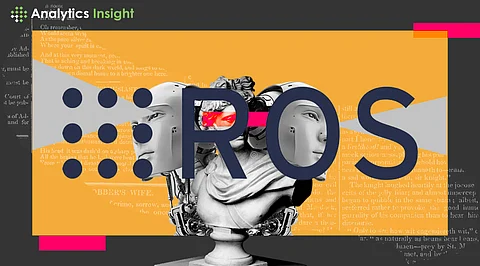

ROS has become popular as a foundational reference software for developing applications in robotic systems. Being an industrial, open-source tool, ROS introduces tools, libraries, and conventions for building, simulating, and deploying robots firmly. However, as is the case with any technology, the developers of the web face several disadvantages and possibilities alike. This article breaks down these aspects, providing information on their further aspects to developers willing to engage ROS.
The article outlines the main challenges related to developing using ROS to help in devising potential strategies to overcome these difficulties.
Another major drawback for developers getting into ROS for the first time is the fact that there is a high tendency for the ROS system to be extremely complex to learn for novices. Understanding ROS is rather easy, as it consists of definite concepts and tools, such as nodes, topics, services, and messages.
When working with ROS, it is quite easy to organize a system which involves the use of other software and hardware parts. One of the key design patterns of ROS is modularity, which has benefits in terms of adaptability but can make the integration of the bundle of packages more challenging at the same time.
Because of ROS’s environment, debugging can be more challenging than traditional software development. This is another factor that is due to the fact that most ROS applications include several nodes that may be active at the same time and thus pinpointing the root of an issue can sometimes be difficult. Some tools such as rqt and rosbag are useful but it is only after you have worked on a robotic operating system project that you can be able to appreciate how useful they especially in managing large data sets are.
ROS remains highly dynamic, with changes being made from one version to another therefore incompatibility. What should be noted is that ROS 1 and ROS 2 belong to two completely different categories, and so, it is impossible to transfer from ROS 1 to ROS 2 easily. Most modules and other resources are dependent on specific versions and, thus, the compatibility has to be guaranteed by the programmer.
However, although ROS may have numerous documents available online, they could be out of date or not properly organized for the frequently unused packages. It may be difficult to find information that is free from factual errors, free from concept decay and outdated. Further, ROS has a large community and a vast amount of documentation; its level of support is not steady.
However, there are opportunities in ROS primarily due to standardization with modularity being the most important one. While the running operating system /ROS/ is used in various projects, having a common foundation for each project is highly beneficial. This standardization makes development work easier as developers do not need to start from scratch every time; they can just survey and apply making the creation of new applications the main focus rather than dealing with basic foundational work.
This flexibility is spiced up by the fact that ROS has a rich ecosystem of libraries and tools, which can address various tasks such as navigation, perception, manipulation, and control. These libraries also reduce the amount of time developers have to spend on planning as they have pre-coded solutions for nearly all purposes regarding robotics.
This availability of ROS source code and the large ROS community are among its biggest advantages. Some of the best features of ROS include its ability to establish relationships between the individuals who are involved in research and development of robotics through forums and knowledge sharing platforms.
ROS is very popular in both academic and industrial settings and thus having a proficiency in ROS can benefit future robotics engineers. Mastery in ROS can lead to many employment prospects in various sectors including auto drifting, industry automation, and healthcare robotization.
Thus, it is seen that the ROS 2 development and adoption are ongoing. The technological progression offers new opportunities. Some of the important features that ROS 2 provides when compared with ROS 1 include; better performance, better security and availability of support for real-time systems.
There is bitterness and sweetness generally associated with the development of applications with ROS. These potential issues may include a high initial difficulty in learning ROS due to the steep learning curve, the complexity in integrating ROS with other software due to its architecture, and difficulties in debugging any errors or issues that may arise during the construction of complex systems out of simpler components.
Join our WhatsApp Channel to get the latest news, exclusives and videos on WhatsApp
_____________
Disclaimer: Analytics Insight does not provide financial advice or guidance. Also note that the cryptocurrencies mentioned/listed on the website could potentially be scams, i.e. designed to induce you to invest financial resources that may be lost forever and not be recoverable once investments are made. You are responsible for conducting your own research (DYOR) before making any investments. Read more here.
